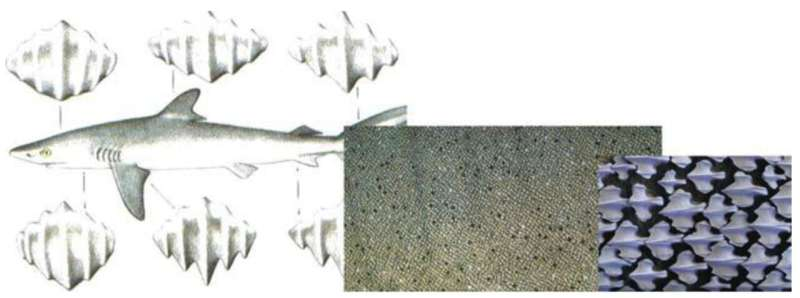Scientists studying nanotechnology are taking inspiration from the unique characteristics of shark skin and dragonfly wings to find solutions to problems related to the ocean and medicine. According to Phys, the research by Flinders University and other institutions, the intricate structure of these natural surfaces could lead to advancements in human technology.
The research team at Flinders University, led by Professor Youhong Tang, focused on the unique structure of sharks' ribletted surfaces that allows them to swim quickly while preventing microscopic sea creatures from attaching to their skin. Professor Tang says, "Our study looked at the special structure of the ribletted surfaces of some sharks, which enables them to reduce drag and friction in fast-swimming sharks while also deterring microscopic marine organisms from adhering to their skin."
Shark Skin & Dragonfly Wings Inspiration
The shape of the ridges or riblets on the shark's skin significantly reduces drag and friction while swimming quickly. The research team, led by Chinese naval architecture, ocean design, and engineering collaborators, aims to use this knowledge to develop a new shark skin-inspired model for reducing turbulent drag. The study found that the riblets on the skin surface perform best when aligned in the same direction as the flow.
By mimicking the structure of shark skin, the research team hopes to create more fuel-efficient and biofouling-resistant marine surfaces for cargo ships, pipelines, and other applications. Additionally, other researchers from Flinders University and La Trobe University have found that the unique properties of insect wings may hold the key to developing new antibacterial solutions.
The shape and alignment of the ridges or riblets on the skin greatly affect the drag reduction, with the best performance when aligned to the flow direction. Additionally, riblets with sharp tips have been found to have the optimal reduction of wall shear stress.

Diagram of shark scales
Antibiotic-Resistant Bacterial Properties
Researchers have been investigating the optimal morphology of drag reduction, focusing on the effects of dimensions, shapes, flow field, and yaw angle on turbulent drag reduction. Many experimental and numerical studies have found that shark skin has excellent performance and significant development prospects. According to Dr. Vi Khanh Truong, a Flinders Biomedical Nanoengineering Laboratory researcher, the wings of dragonflies and cicadas have evolved to have a certain structure that allows them to have bactericidal properties.
Specifically, the nanopillars or nanospikes on the surface of these insects physically damage the bacterial cells that come in contact with them, causing their death. The research team is studying these natural surfaces to create guidelines for designing synthetic, bio-inspired materials and developing new techniques for creating similar micro- and nano-structures on synthetic materials.
The rise of antibiotic-resistant bacteria is a growing concern worldwide, with an estimated 700,000 deaths per year and predictions that this number could reach 10 million by 2050. Microbial biofilms, which form on hospital and instrument surfaces, pose a significant risk to human health by harboring infection-causing bacteria. To address this problem, scientists are developing new antibacterial and antifouling materials. They are creating man-made coatings that use bactericidal agents such as metal derivatives or antibiotics. However, some researchers are exploring the idea that perhaps "nature knows best", and studying natural surfaces may provide a better solution.
RELATED ARTICLE: Novel Method for Metal Nanostructures Possess High Electrocatalytic Ideals for Fuel Cells Efficiency
Check out more news and information on Nanotechnology in Science Times.



![Earth's Quasi-Moon Kamo‘oalewa Could Originate From Lunar Surface Not Asteroid Belt [Study]](https://1721181113.rsc.cdn77.org/data/thumbs/full/53275/89/56/50/40/earths-quasi-moon-kamo-oalewa-could-originate-from-lunar-surface-not-asteroid-belt-study.png)










